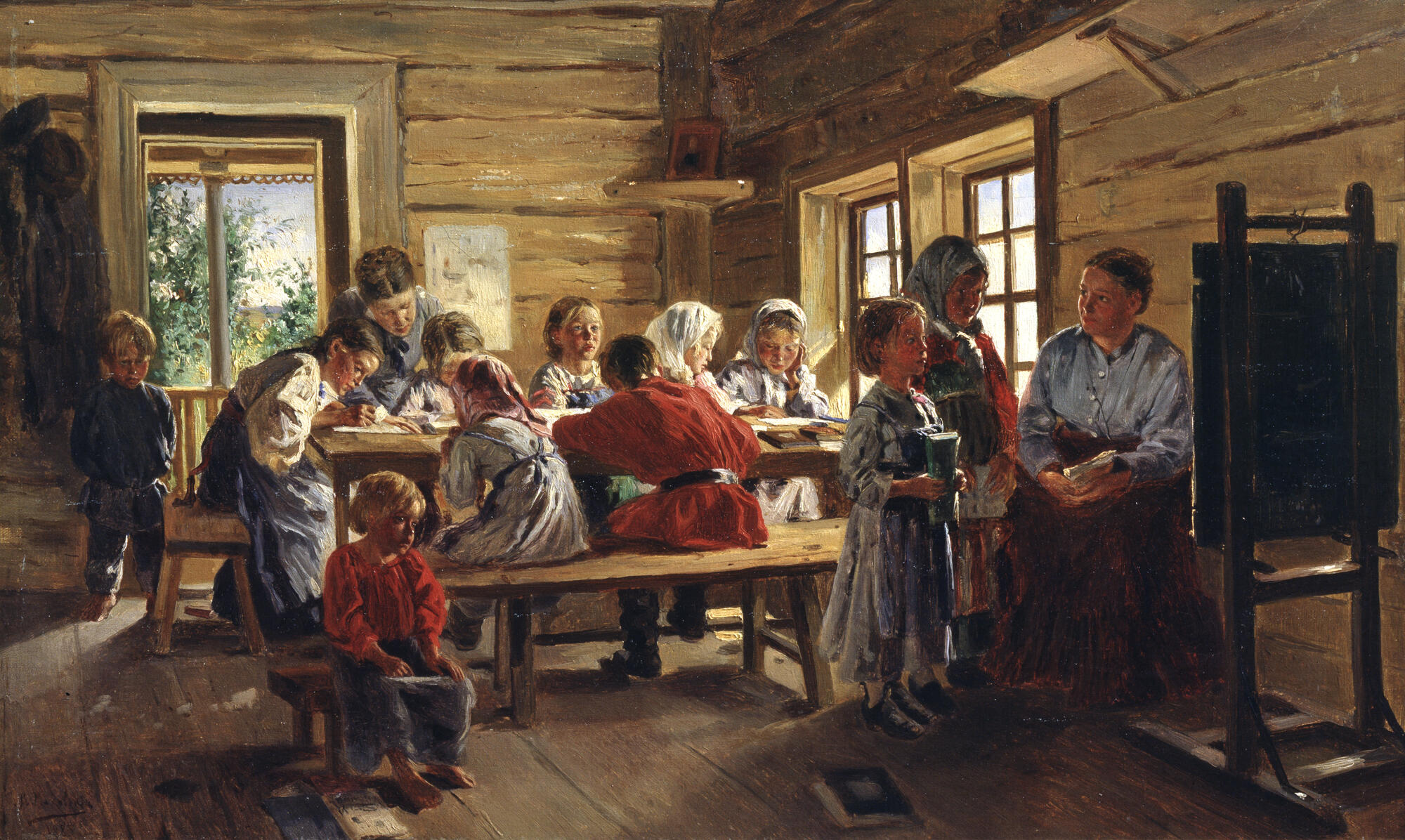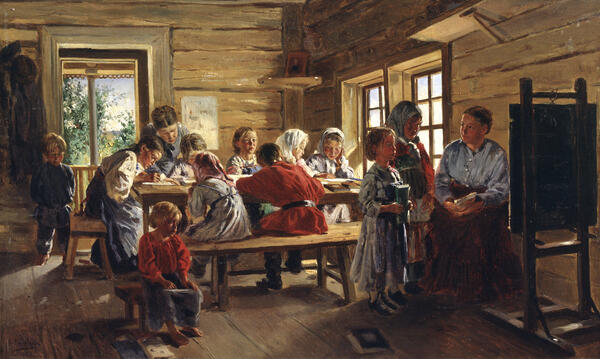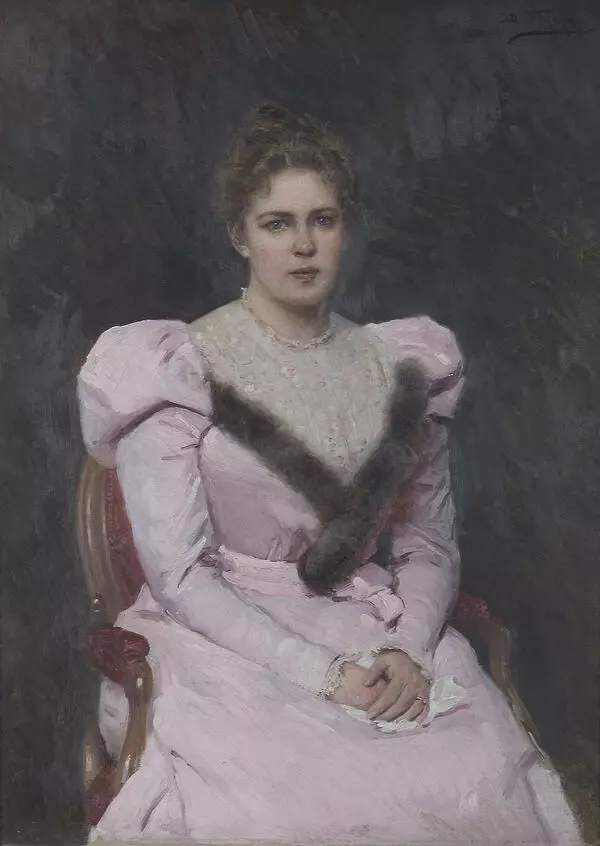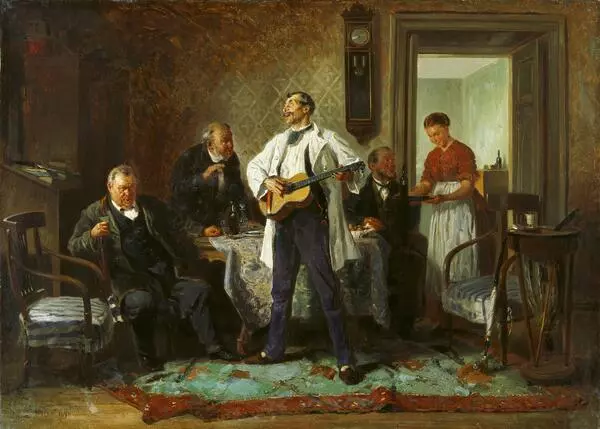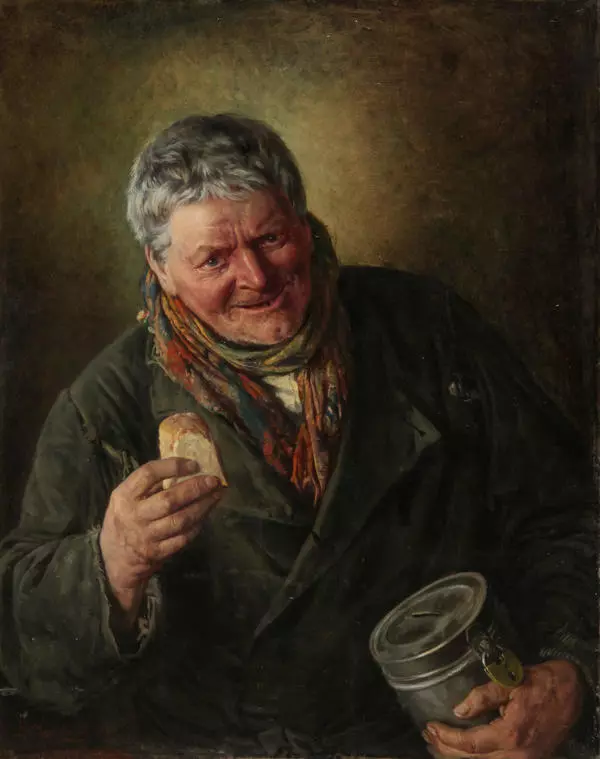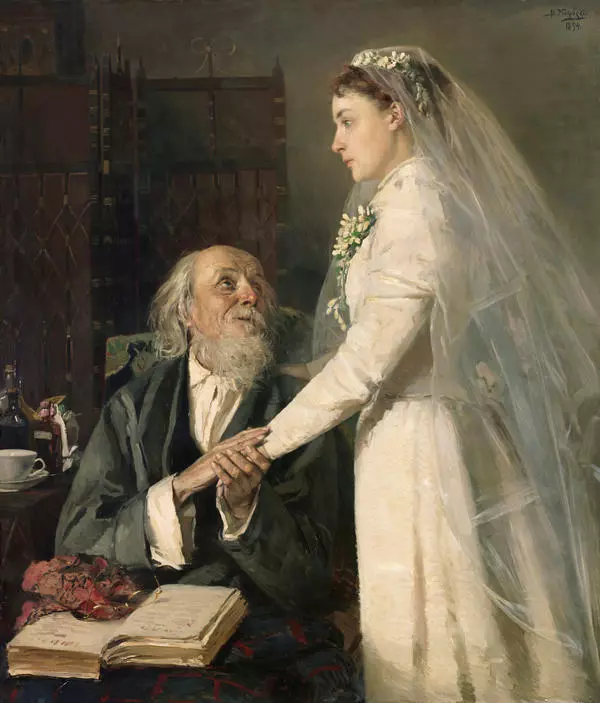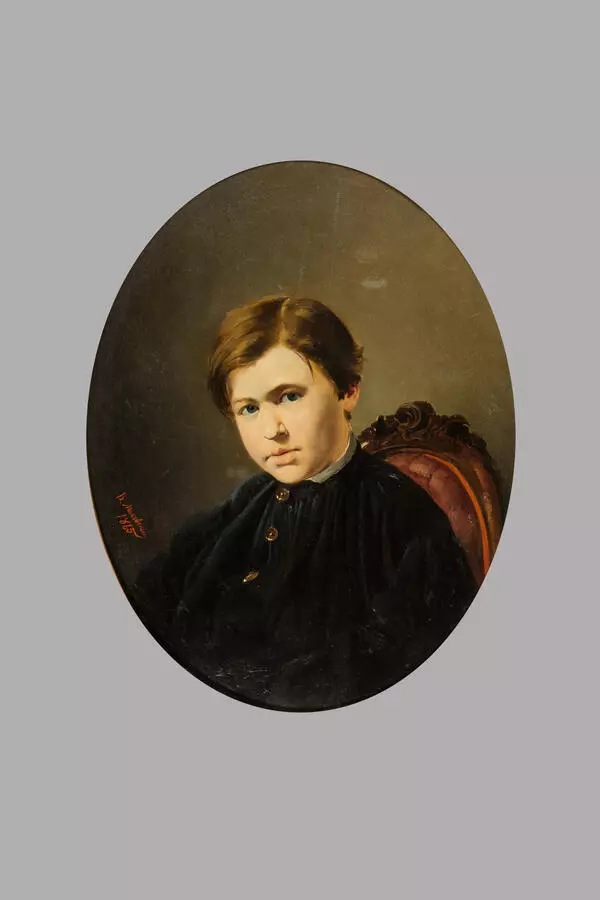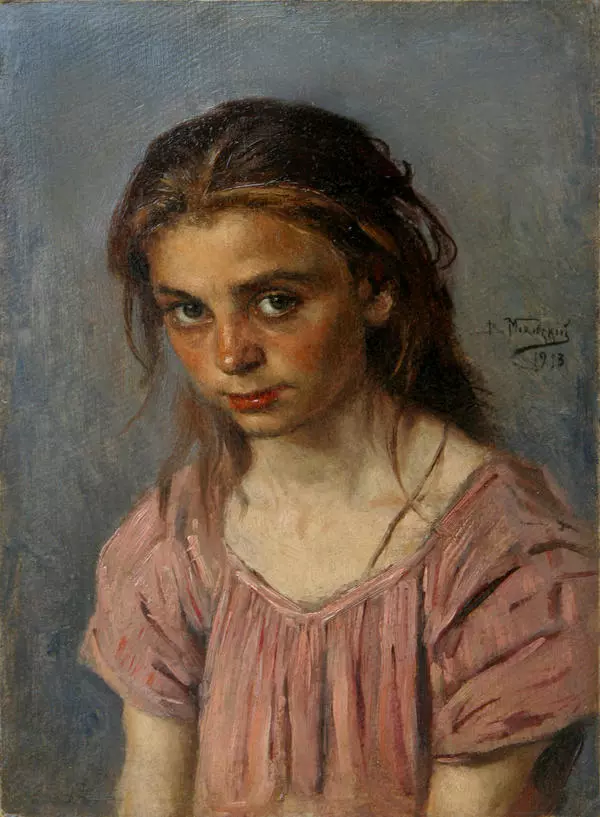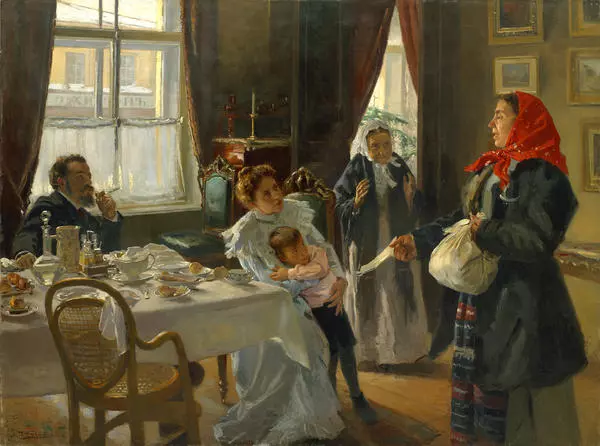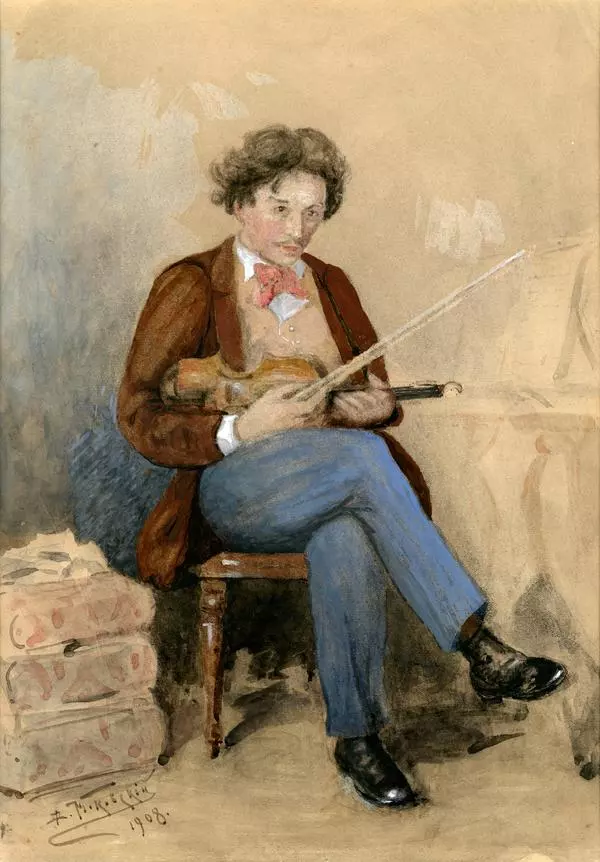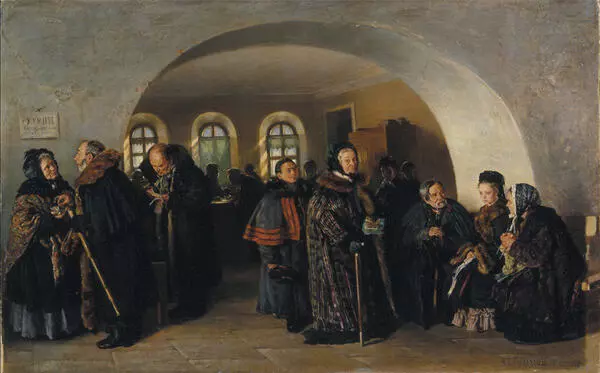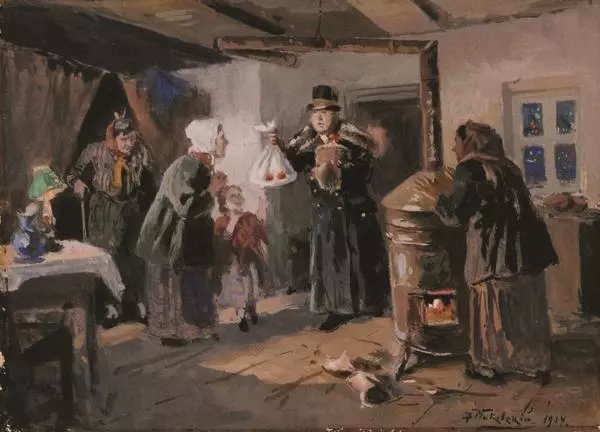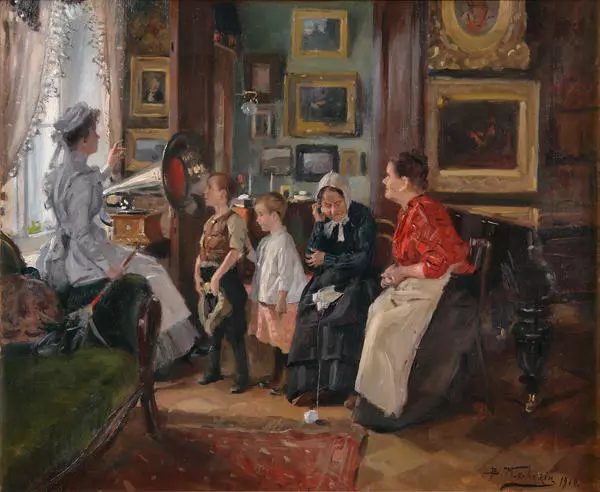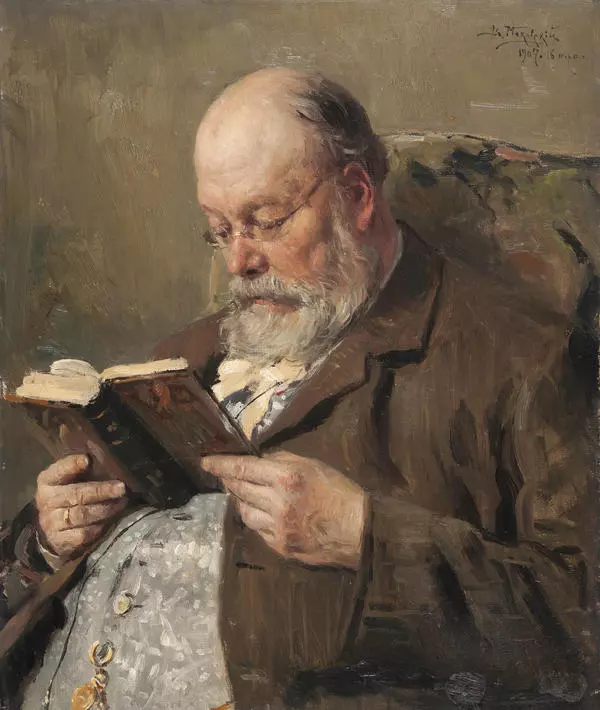Vladimir Makovsky is a Russian artist, a bright representative of The Wanderers, the Association of traveling exhibitions. The painter was born into a prominent Moscow artistic family; his father and brothers were also artists. Makovsky started painting at an early age. The first teacher of the young man was the famous portrait painter Vasily Tropinin.
Makovsky was a master of the ‘small’ genre. His canvases are based on literature, borrowed from Russia’s everyday life in the second half of the 19th century. The painter’s works’ characters were representatives of almost all the Russian Empire’s social strata and societies. The artist knew firsthand about the life of poor people. ‘He visits all the poorhouses… He knows all the sticks of Moscow. All the slums will meet him in the markets, at festivities, at all the flea markets onto balls, theatres, concerts, masquerades, on the Boulevard, ” that’s what critic Nikolai Alexandrov wrote about him.
Makovsky’s work was strongly influenced by the ideas of the Narodnichestvo (Going to the People), a movement popular in the middle of the 19th century. Peasant children often used to become characters of the artist’s paintings. ‘In a rural school’ is one of such works. The artist depicted a typical rural school of the 19th century: the classes take place in an izba (wooden hut), at a large table, different aged children sit on benches.
Makovsky was a master of the ‘small’ genre. His canvases are based on literature, borrowed from Russia’s everyday life in the second half of the 19th century. The painter’s works’ characters were representatives of almost all the Russian Empire’s social strata and societies. The artist knew firsthand about the life of poor people. ‘He visits all the poorhouses… He knows all the sticks of Moscow. All the slums will meet him in the markets, at festivities, at all the flea markets onto balls, theatres, concerts, masquerades, on the Boulevard, ” that’s what critic Nikolai Alexandrov wrote about him.
Makovsky’s work was strongly influenced by the ideas of the Narodnichestvo (Going to the People), a movement popular in the middle of the 19th century. Peasant children often used to become characters of the artist’s paintings. ‘In a rural school’ is one of such works. The artist depicted a typical rural school of the 19th century: the classes take place in an izba (wooden hut), at a large table, different aged children sit on benches.
Makovsky demonstrates a sincere interest in his characters: each child’s image is unique; everyone has a personality with his own little story. The artist’s works are characterized by psychologism: typical poses, expressive gestures, and facial expressions of the characters enhancing an impression upon the audience.
‘In a rural school’ is characterized by warm color. The canvas is filled with sunlight illuminating the uncomplicated interior of the peasant hut. Expressive means serve the artist’s primary goal: to show the world of peasant children’s childhood. Looking closely at the outside world, Vladimir Makovsky sincerely sympathized with human grief and rejoiced in other people’s luck.
